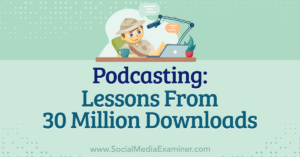
As Steve Blank aptly asserts, startups are essentially-
“Organisations formed to search for a repeatable and scalable business model.”
Fraught with challenges, the journey of a startup is a race against the clock where entrepreneurs are persistently struggling to achieve rapid growth and scalability.
Investopedia, however, paints a grim picture by revealing that the five-year failure rate of startups is close to a staggering 90%. So, what’s the core reason for this failure? Revenue generation.
Money, unquestionably, stands as the lifeblood upon which the growth of any startup counts. Countless promising ventures have withered away because they couldn’t generate positive cash flow.
Do you find yourself in a situation where your startup isn’t generating considerable income to facilitate scaling? Worry not; this article narrows down five invaluable strategies for scaling your startup’s revenue generation and taking it to the summit of success.

Establishing Key Performance Indicators (KPIs)
Evaluating the success of your startup begins with the identification of key performance indicators (KPIs). Adept startup entrepreneurs prioritise metrics that align closely with their company’s vision and mission and allocate resources accordingly.
Here are some widely recognised growth metrics:
Customer Acquisition Cost (CAC)
Calculate CAC by dividing total acquisition costs by the number of new customers acquired. It offers insights into the efficiency of your customer acquisition efforts.
Customer Lifetime Value (CLV)
CLV represents the net profit attributed to a customer over their lifetime. Calculate it by dividing the average order value by one minus the repeat purchase rate and subtracting CAC. This metric helps in assessing the long-term value of your customer base.
Burn Rate
This reflects the rate at which a company spends its capital. To calculate it, define a specific data period and determine how much capital was available at the beginning of that period. Then, calculate how much was spent during that timeframe, multiplied by the number of months in the dataset.
Gross Profit Margin (GPM)
GPM measures revenue after accounting for the cost of goods sold. It’s calculated by dividing revenue by the cost of products sold, providing insights into the profitability of your products or services.
Conversion Rate
Conversion rate determines the effectiveness of your sales or marketing efforts. Calculate it by dividing the number of conversions by the total number of visits. This metric sheds light on how well you’re turning prospects into customers.
Defining your target audience
To formulate a viable growth strategy, it’s crucial to know your target customers. Even if you’re just starting and haven’t acquired customers yet, identifying your target market is a fundamental step. This process offers invaluable insights into their desires and requirements. Moreover, segmenting your prospective customers is equally vital, enabling you to tailor your offerings more effectively to their specific interests.
Failing to identify your target audience can lead to misdirected marketing efforts, incorrect product enhancements, and costly mistakes for your startup. Fortunately, there are several methods for identifying your ideal market.
Engage with potential customers to understand their pain points better. Email surveys, newsletters, client interviews, user testing, and focus groups can help you to know their needs better.
You can also leverage established market research organisations to gain insights into your audience’s preferences, behaviours, and challenges. Or study your competitors to make out their target demographic. Analyse why customers choose them, what they offer, and what sets them apart in the market.
Leverage the power of upselling
One of the most effective techniques to boost revenue per transaction is the strategic use of ‘upselling’. This widely-used approach is designed to encourage customers to increase their expenditure during a transaction.
Consider the following examples of successful upselling:
- Domain name providers equip purchasers with the opportunity to enhance their protection with add-on services, such as HTTPS certificates.
- Electronics stores offer extended warranties alongside electronic product purchases.
- Fast-food restaurants ask the much-tempting– ‘Would you like fries with that?’ after a customer orders a burger.
The key to upselling lies in its ability to elevate the average transaction size and increase the overall expenditure of each customer. While it has long been a crucial e-commerce strategy, it is also gaining traction among SaaS brands and mobile apps.
.thumbnailWrapper
width:6.62rem !important;
.alsoReadTitleImage
min-width: 81px !important;
min-height: 81px !important;
.alsoReadMainTitleText
font-size: 14px !important;
line-height: 20px !important;
.alsoReadHeadText
font-size: 24px !important;
line-height: 20px !important;

Furnish freemium services
The freemium model is a strategic pricing approach that offers users access to a basic version of your service at zero cost, with the goal of converting them into subscribers over time.
For B2B startups, freemium services can be a powerful catalyst for revenue generation. They facilitate the rapid expansion of your user base, creating a substantial pool of high-quality leads.
Many successful SaaS startups have leveraged the potential of the freemium pricing model. For instance, Dropbox provides users with a permanent free version of its product. While they don’t expect every user to upgrade to premium, Dropbox has evolved into an $11 billion company, driven by its extensive user base.
Elevate your pricing strategy
A simple yet often overlooked strategy – raising the prices of your product/service. While many companies hesitate to do with fear of losing customers, it’s actually a great strategy to boost your revenue.
An effective approach to increasing prices is by introducing new ‘premium’ options alongside your existing offerings. This empowers your customers to choose from a range of alternatives, catering to different needs and budgets.
Here are a few tips to achieve this:
- Implement price hikes gradually over time to minimise customer resistance.
- Bundle products or services together to create perceived value and encourage customers to see it as a favourable deal.
- Introduce new, high-end services or products that address specific customer needs and justify the higher cost.
Embarking on your startup’s growth journey requires not just hard work but also smart strategies. Ultimately, it is important to closely monitor your emerging revenue channels, evaluate their performance and adjust your strategies as needed.










